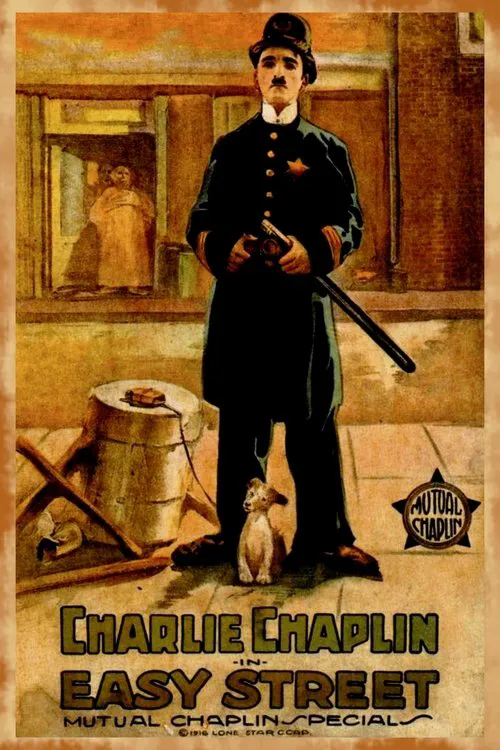Easy Street

Plot
In the bleak and unforgiving streets of a late 19th or early 20th century urban landscape, a down-and-out derelict struggles to find purpose and meaning in a life shrouded in despair. Living off the streets, he finds himself frequently huddled under the steps of a local missionary church, where the warmth and sense of community offer a fleeting respite from the harsh realities of his existence. It is here, one Sunday morning, that the derelict becomes transfixed by the impassioned sermon of a zealous preacher. The words of the minister strike a chord within the derelict, awakening a glimmer of hope and a sense of longing within his soul. As he listens, he becomes increasingly entranced by the beauty of the pianist accompanying the congregation's hymns, her music weaving a spell that leaves him enchanted and captivated. Inspired by the preacher's message of redemption and the pianist's enchanting melody, the derelict is motivated to take the first tentative steps towards reforming his troubled life. Recognizing that his current existence offers little possibility for change or improvement, he sets his sights on joining the local police force. Perhaps, he thinks, this will afford him a measure of dignity, a sense of purpose, and a way to serve a community that seems to have lost its way. As he begins his application for the police department, the derelict learns that his first assignment will be to patrol the notorious Easy Street, a section of the city ruled by a particularly ruthless gang of thugs and petty criminals. Despite his reservations and the risks involved, he sees this as an opportunity to redeem himself and prove his worth to a society that has largely written him off. With a mix of trepidation and determination, the derelict sets out to prove himself as a capable and effective officer. His first encounters with the residents of Easy Street are marked by a mixture of curiosity and hostility, as they size him up and test his resolve. The gang's leader, a burly and intimidating figure, takes particular notice of the new officer, eyeing him warily and waiting for him to slip up. As the derelict patrols his patch, he becomes increasingly aware of the stark contrasts between the lives of the affluent and the downtrodden. The Easy Street gang, driven by poverty, desperation, and a lack of opportunities, turn to crime as a means of survival. Meanwhile, the wealthier sections of town appear to thrive in an atmosphere of complacency and obliviousness, with their residents enjoying the benefits of a seemingly well-ordered society. In a city where social and economic conditions have created an atmosphere of neglect and despair, the task of the derelict-turned-officer is no easy one. Yet, as he walks the streets, he begins to see the faces and stories of the people he encounters, and a deeper understanding of the complexities of the city and its inhabitants begins to emerge. Through his experiences on Easy Street, the derelict comes to realize that redemption and reform are not simply a matter of personal effort or individual agency. The struggles of the people he meets are rooted in systemic issues, from poverty and inequality to lack of access to opportunities and resources. Real change requires a more profound and collective effort, and one that engages the very fabric of society. In the end, the derelict's journey is one of personal growth and self-discovery, as he grapples with the tensions between his own aspirations and the harsh realities of the world around him. Though the path ahead will be fraught with challenges and uncertainties, he finds a sense of purpose and belonging in the work he does, even as he remains acutely aware of the broader social and economic forces that shape the lives of those he serves.
Reviews
Recommendations



